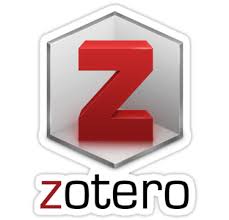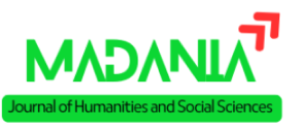Strategi Komunikasi Dakwah Kajian Keluarga Berbasis Online: Studi di Masjid Al Irsyad Surabaya
DOI:
https://doi.org/10.59240/kjsk.v5i3.156Keywords:
Dakwah Communication Strategy, Family Study, Mosque, Digital Media, Marketing CommunicationAbstract
The rapid advancement of digital technology has transformed the pattern of Islamic preaching (dakwah) communication from traditional approaches to online-based platforms. This study aims to analyze the dakwah communication strategies implemented in the Kajian Keluarga Online program at Al Irsyad Mosque, Surabaya, focusing on the effectiveness of the marketing communication mix in reaching and maintaining audience engagement. Using a qualitative approach with a case study design, data were collected through in-depth interviews with mosque administrators, media managers, and active participants, supported by observation and digital documentation. Data were analyzed using Miles and Huberman’s interactive model, which includes data reduction, display, and conclusion drawing. The findings indicate that the dakwah communication strategy at Al Irsyad Mosque effectively integrates elements of advertising, public relations, direct promotion, and social media marketing. The utilization of Zoom and social media platforms, particularly Instagram and YouTube, successfully expands audience reach and enhances participant loyalty. This study highlights that innovative, technology-based dakwah communication can strengthen the mosque’s role as a center for Muslim family development that is adaptive to the dynamics of the digital era.
References
Amin, H., & Isa, Z. (2019). The impact of Islamic corporate governance on customer satisfaction: Evidence from Malaysian Islamic banks. International Journal of Ethics and Systems, 35(2), 272–288. https://doi.org/10.1108/IJOES-03-2018-0045
Alwi, S., & Fitriah, F. (2022). Transformasi dakwah di era digital: Optimalisasi media sosial dalam menyebarkan pesan Islam. Jurnal Komunikasi Islam, 12(1), 33–45. https://doi.org/10.15642/jki.2022.12.1.33-45
Chanra, M., & Tasruddin, R. (2025). Peran media sosial sebagai platform dakwah di era digital: Studi kasus pada generasi milenial. Kolaboratif Sains, 8(1), 872–881. https://doi.org/10.56338/jks.v8i1.6862
Hasanah, U. (2020). Reaktualisasi peran masjid sebagai pusat dakwah dan pemberdayaan umat. Jurnal Ilmu Dakwah, 40(2), 215–228. https://doi.org/10.24014/jid.v40i2.11032
Hraskova, D., & Rosnerova, Z. (2021). Electronic communication of non-profit organizations in a global society. SHS Web of Conferences, 92, 06012. https://doi.org/10.1051/shsconf/20219206012
Ibrahim, M. S. S., Musyanto, M. H., & Taufik, M. (2024). Qulubana, 5(1), 188–203. https://doi.org/10.54396/qlb.v5i1.1239
Kahfi, A., Mahmudi, K. A., & Arjuna, A. (2024). Transformation of da’wah in the digital era: Modern strategies in optimizing technology-based da’wah management. JDK: Jurnal Dakwah dan Komunikasi, 9(2), 63–79.
Kotler, P., & Keller, K. L. (2016). Marketing management (15th ed., S. Wall, Ed.). Pearson Education.
Latifah, N. (2020). Strategi dakwah Islam di era digital. Jurnal Dakwah, 21(1), 1–20. https://ejournal.iainh.ac.id/index.php/alinsan/article/view/418
Lubis, R., & Siregar, A. (2021). Dakwah digital dan perubahan paradigma komunikasi keagamaan di era 4.0. Jurnal Dakwah dan Komunikasi Islam, 5(1), 45–60.
Mangold, W. G., & Faulds, D. J. (2009). Social media: The new hybrid element of the promotion mix. Business Horizons, 52(4), 357–365. https://doi.org/10.1016/j.bushor.2009.03.002
Miles, M. B., & Huberman, A. M. (2014). Qualitative data analysis (3rd ed., L. Barrett, H. Salmon, K. Perry, & K. Koscielak, Eds.). SAGE Publications.
Mardiana, R. (2020). Daya tarik media digital sebagai media dakwah untuk generasi milenial. Komunida: Media Komunikasi dan Dakwah, 3(3), 1041–1048. https://doi.org/10.47467/visa.v3i3.5468
Mulitawati, I. M., & Retnasary, M. (2020). Strategi komunikasi pemasaran dalam membangun brand image melalui sosial media Instagram (Studi kasus komunikasi pemasaran produk Polycrol Forte melalui akun Instagram @ahlinyaobatmaag). Komunikologi: Jurnal Pengembangan Ilmu Komunikasi dan Sosial, 4(1), 23–33. https://doi.org/10.30829/komunikologi.v4i1.7616
Puspitasari, N. P., & Dermawan, D. B. (2023). Evaluasi efektivitas sistem informasi dalam strategi pemasaran pariwisata Masjid Istiqlal di Instagram. Jurnal Publikasi Sistem Informasi dan Manajemen Bisnis, 3(1), 56–66. https://doi.org/10.55606/jupsim.v3i1.2358
Rahmatika, A. (2024). Penggunaan media sosial sebagai sarana promosi wisata religi Masjid Jogokariyan. Ahsan: Jurnal Dakwah dan Komunikasi, 3(1), 69–78. https://ejournal.iain-manado.ac.id/index.php/ahsan/article/view/1045
Riyadi, A., Oyama, S., & Syah, F. (2022). Pemberdayaan masyarakat dalam pemanfaatan podcast untuk pengajian online menggunakan V-Mix kombinasi dengan Zoom pada Masjid Al-Mustaqim Ngestiharjo Bantul. Masyarakat Berdaya dan Inovasi, 3(1), 68–73. https://www.mayadani.org/index.php/MAYADANI/article/view/84
Saputra, E. (2022). Marketing da’wah through new media at the "Teras Dakwah" (Da’wah Terrace) Yogyakarta, Indonesia. Jurnal Dakwah Risalah, 33(1), 1–10. https://doi.org/10.24014/jdr.v33i1.18159
Tuten, T., & Solomon, M. R. (2017). Social media marketing: MKT 205 course notes. University of International Business and Economics International Summer School.
Downloads
Published
How to Cite
Issue
Section
License
Copyright (c) 2025 Moch. Herma Musyanto, Masrur Huda

This work is licensed under a Creative Commons Attribution-NonCommercial-ShareAlike 4.0 International License.






